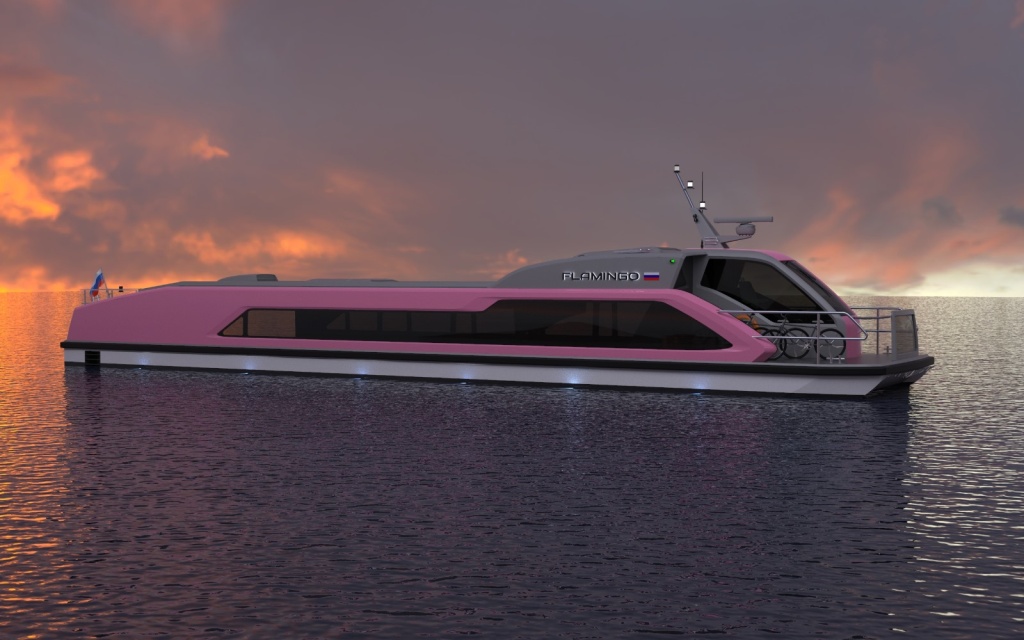29.07.2024 | Алюминиевая Ассоциация
AN Marine Consulting Design Bureau has presented two new projects: the Flamingo and Pelican high-speed vessels. The vessels are designed using Russian-made materials and can access unequipped beaches. They can also ignore many restrictions on the depth of operation. The Shipbuilding and Composites shipyard will take over the general management of ship construction. This shipyard is located in Primorye and specialises in mass building of civilian vessels made of composite materials. The company is one of the founding members of the industrial cluster in shipbuilding and ship repair, which was established at the initiative of the regional administration.
Other design bureaus had previously attempted to develop this type of vessel. However, the use of foreign components and equipment made it expensive to purchase and maintain the boats, making it economically unfeasible to bring these products to market.
The Flamingo and Pelican are designed using innovative materials. The hull was originally planned to be made of fiberglass, but now it is made of aluminium-scandium alloy 1581. This change allowed to increase the strength and reduce the overall weight of the vessels. The alloy was created by a member of the Aluminium Association, the Institute of Light Materials and Technologies (ILMiT). It is a lightly doped alloy with a scandium content of 0.03%. This allowed to improve the strength properties of the material while still making it readily available for various applications such as shipbuilding, car manufacturing, and other industries. Tests conducted by the Aluminium Association and BRO Boats, a manufacturer of boats from Rostov-on-Don, have shown that it is possible to reduce the weight of a boat by more than 10% compared to an analogue made of alloy 5083. In the case of high-speed vessels, the difference is even more significant. This solution increased the reliability of the Flamingo and Pelican hull structures when operating in real water. It also made them more resistant to abrasion when moored on sand and pebbles.
The design bureau and the Shipbuilding and Composites shipyard plan to further improve the vessels. One of the ways they plan to do this is by using Russian-made engines, including high-powered ones. It is expected that the first vessel to receive such an engine will be the Flamingo starting in 2026. The Pelican will use an even more powerful version with an output of 600-650 bhp. Another key feature of the new Flamingo and Pelican projects is the use of Russian-made water jet propulsion systems. The control of water jet systems will also be done using promising technologies from Russian companies.

When the project is implemented, it will help expand the market for Russian-made high-speed vessels made of aluminium alloys, not only within the country but also abroad. According to experts, the design by the bureau may be in demand in countries such as Southeast Asia, Africa, and South America, where the need for fleet renewal is growing.
The designs of the Pelican and Flamingo high-speed vessels were among the participants in the Best Industrial Design of Russia competition. The competition was organised by the Department of Investment and Industrial Policy of Moscow in partnership with the Ministry of Industry and Trade of Russia, the Ministry of Culture of the Russian Federation, and the Moscow City Government.

